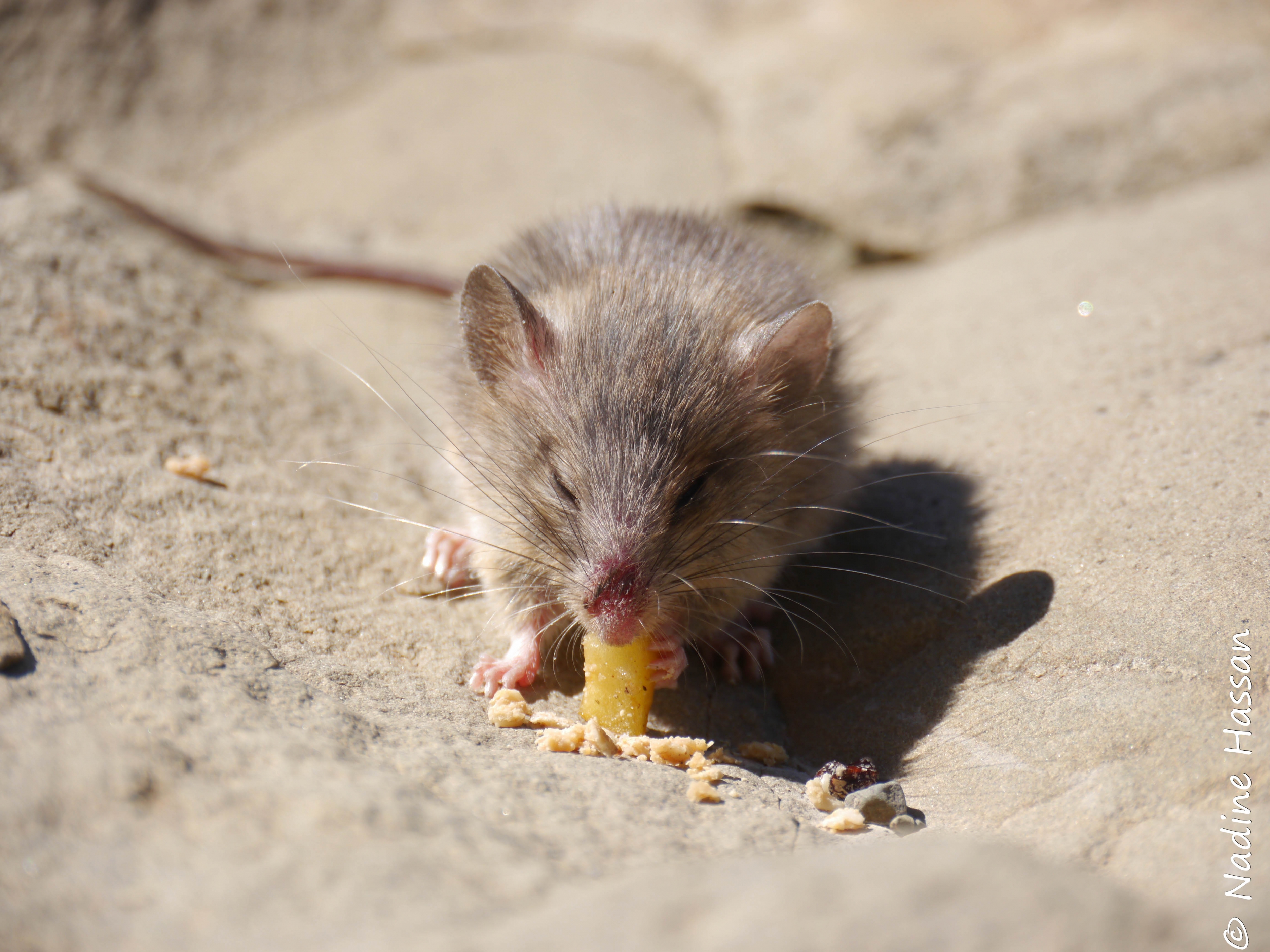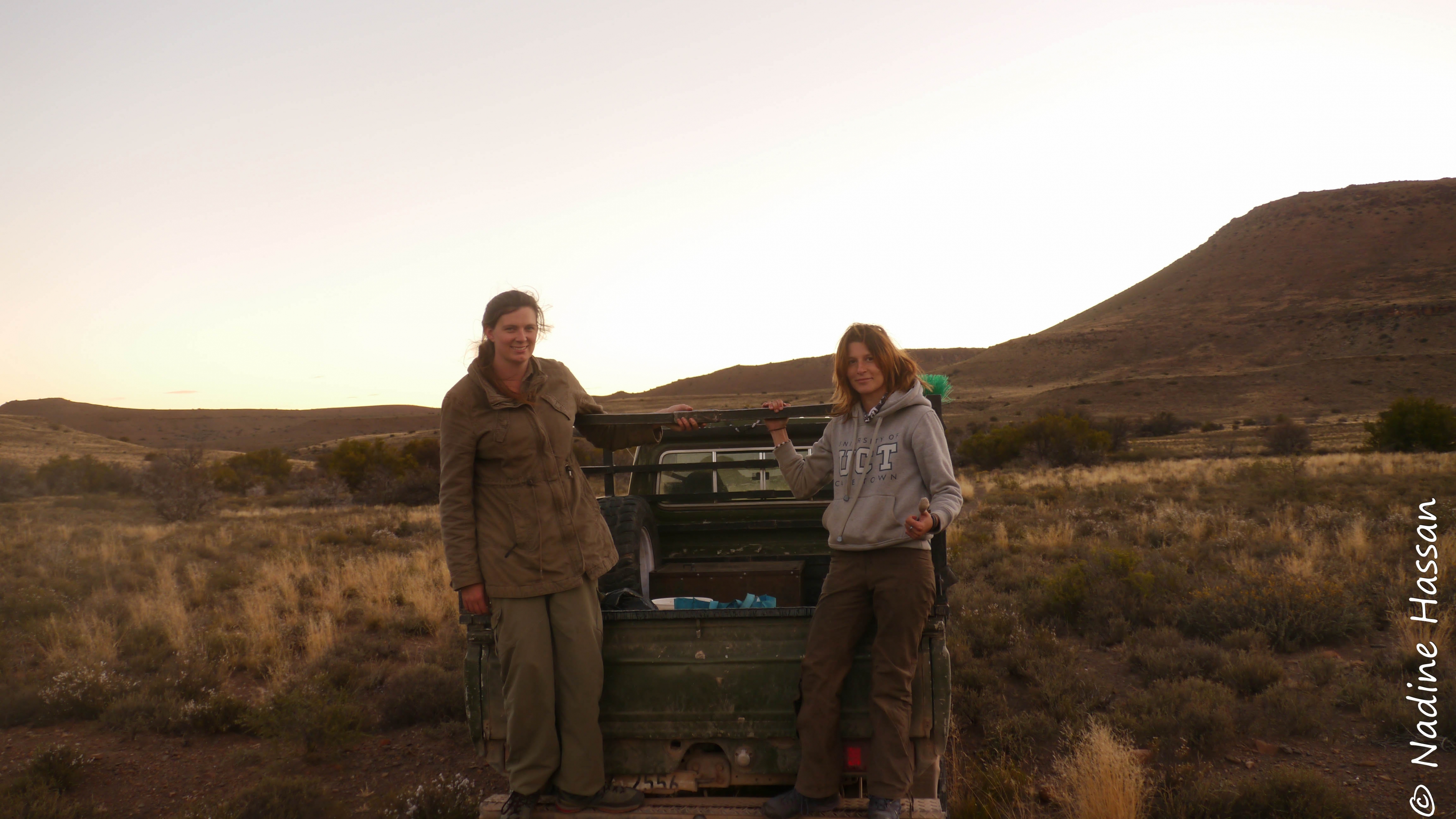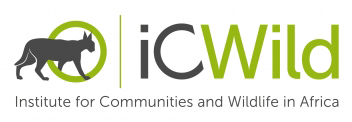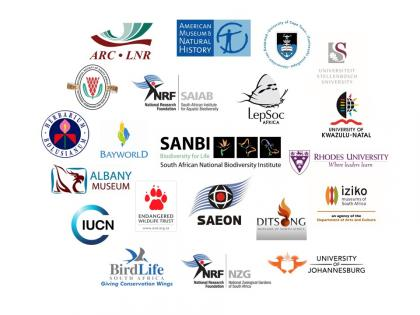|
Jump to: iCWild's work · Key insights · Project team · Collaborators and funders · Project blogs · Outputs |
Gaps in our knowledge of where animal species occur can impede our ability to effectively manage and conserve them. This is especially true in areas where planned, large-scale landscape changes often have major impacts on the animals living within them.

The Karoo region of South Africa has been earmarked for shale gas fracking and uranium mining. However concerns have been raised over the potentially negative effects these developments will have on the region’s biodiversity. In 2016, to address large gaps in our knowledge of the Karoo’s ecology in the Shale Gas Exploration Area (SGEA), the South African National Biodiversity Institute (SANBI) initiated a multi-institutional project named BioGaps. We worked as part of Biogaps to collect baseline data on the spatial diversity and community structure of mammals across 30 sites in the SGEA. We aimed to provide baseline survey data that could then be used to support government decision-making.
iCWild's work
As part of Nadine Hassan’s MSc, we surveyed small mammals at 24 study sites dispersed across the SGEA, over 6990 trap-nights between September 2016 and March 2017. We exclusively targeted terrestrial micromammals weighing <1kg that belonged to the Rodentia, Macroscelidae and Soricidae orders. We then used climate variables to explore the possible effects of climate on small mammal diversity across the landscape. We combined our records with historical records of small mammal diversity to investigate whether small mammal diversity correlated with particular vegetation characteristics.
Additionally, Zoe Woodgate used camera traps to evaluate species richness for medium and large mammals (>0.5kg) across the Karoo. She deployed 270 camera traps at 30 sites, hoping not only to elucidate where species occur in the landscape, but to assess the importance of various factors, such as the presence of domestic livestock, in shaping mammal communities in the drylands.

Using this information we aim to:
-
Assess mammal diversity at different spatial scales within the SGEA.
-
Determine which factors (biotic, abiotic and macroecological) may have shaped mammal communities and patterns of spatial diversity in the SGEA, and especially in the Nama-Karoo biome.
-
Identify the mammal areas most vulnerable to shale gas exploration activities to mitigate the negative impacts of fracking, and inform future fracking operations.
Key insights
There are previously unknown species hiding within the overlooked small mammal communities.

Initial DNA work has uncovered cryptic species not thought to occur in this area, including two new locations for a recently described species, Elephantulus pilicaudus. Nadine is currently investigating whether historical land use in the Karoo shaped the present small mammal community.
The Karoo appears to have no unique hotspots of species diversity for medium-to-large mammals.
All sites in the SGEA shared similar communities of medium to large mammal species, with almost no species of conservation concern detected across the 30 intensively sampled sites. Indeed, the best predictor of species richness was longitudinal position, which integrates a variety of environmental and climatic variables and so provides a proxy for key drivers of biodiversity, such as rainfall and soil productivity across biomes.
Commercial farming may have little impact on species diversity for medium-to-large mammals in the SGEA.
The relative abundance of sheep and other domestic livestock did not significantly affect medium-to-large mammal species richness in the SGEA. Although surprising, this result is comparable to other recent iCWild findings for mammals on farmland in semi-arid regions of the Karoo. Our results suggest that the Karoo currently supports a diverse community of wildlife despite hundreds of years of sustained human impact in the form of extensive livestock grazing with its itinerant fencing, lethal management of predators, road network and increasing human population.
Project team
|
Zoe Woodgate (iCWild), PhD candidate, Contact for medium-to-large mammal research Nadine Hassan (iCWild), MSc candidate, Contact for small mammal research Dr Gary Bronner (Department of Biological Science, UCT), Supervisor Prof Justin O’Riain (iCWild), Co-supervisor |
Collaborators and funders
Project pages
See the official Karoo BioGaps blog and Facebook page, and Nadine Hassan’s blog to learn more about this research. If you would like to contribute as a citizen scientist, please post your Karoo species observations on iNaturalist.
Related outputs
Click here to view iCWild's full output list, and use the filter tool to view outputs related to Biogaps.
Photo credits: Nadine Hassan.


